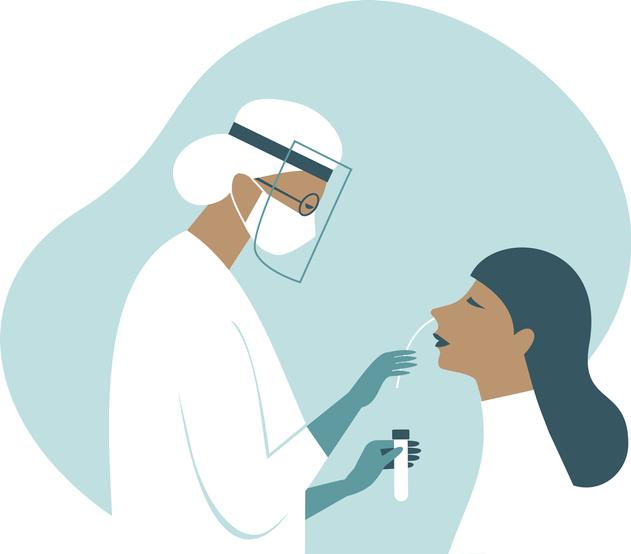
COVID-19 rate low among pregnant women, study finds
Just 2.7% of expectant mothers overall tested positive for the coronavirus at UW Medicine hospitals in Seattle after universal screening.
In a study of pregnant women who delivered babies at UW Medicine facilities during the local height of COVID-19, remarkably few tested positive for the coronavirus.
The study, published recently in the journal Clinical Infectious Diseases, showed that universal testing gave a clear picture of the disease's scope among women entering the hospitals to give birth, and also informed what precautions were needed in individual birthing units and in postpartum care.
The study came to several conclusions, said Dr. Sylvia LaCourse, an University of Washingtona assistant professor of Medicine, Global Health, and Infectious Diseases.
“UW Medicine has done a remarkable job of early initiation of universal testing for COVID-19 for labor and delivery patients, using a combination of onsite rapid testing, high volume centralized testing at the UW Virology Lab, and outpatient drive-through screening before admission,” LaCourse said.
This meant that almost all patients had a known COVID-19 status before delivery, and informed use of personal protective equipment (PPE) to ensure protection of patients and healthcare workers, she added.
The study reviewed the health of 230 mothers between March 2 and April 15, including periods before and after the initiation of universal screening. Among all women coming into UW Medical Center Montlake and Northwest campuses, the positive rate was 2.7%—lower than that of the general population and lower than rates reported among similar patients in New York City (13-14%). LaCourse attributed the locally low rate to early public health response in the region and better screening availability.
Among mothers with coronavirus symptoms, about 20% tested positive in the study. “This highlights the importance of continued testing with this population,” said LaCourse.
Although universal screening of asymptomatic women did not turn up many coronavirus cases, the practice should be continued for now, because it "provides important surveillance information due to the representativeness of this population to the greater community, “ LaCourse said, adding that this is a generally healthy population.
LaCourse was co-first author for the study along with Dr. Alisa Kachikis, a UW assistant professor of Obstetrics and Gynecology. Drs. Kristina M. Adams Waldorf and Jane Hitti were co-senior authors.
This work was supported by the National Institute of Allergy and Infectious Diseases (AI133976, AI145890, AI144938, AI143265, AI120793). Study data were managed using a REDCap electronic data capture tool hosted by the Institute of Translational Health Sciences at the University of Washington, which was supported by the National Center for Advancing Translational Sciences (UL1TR002319).
For details about UW Medicine, please visit http://uwmedicine.org/about.
Tags:pregnancy